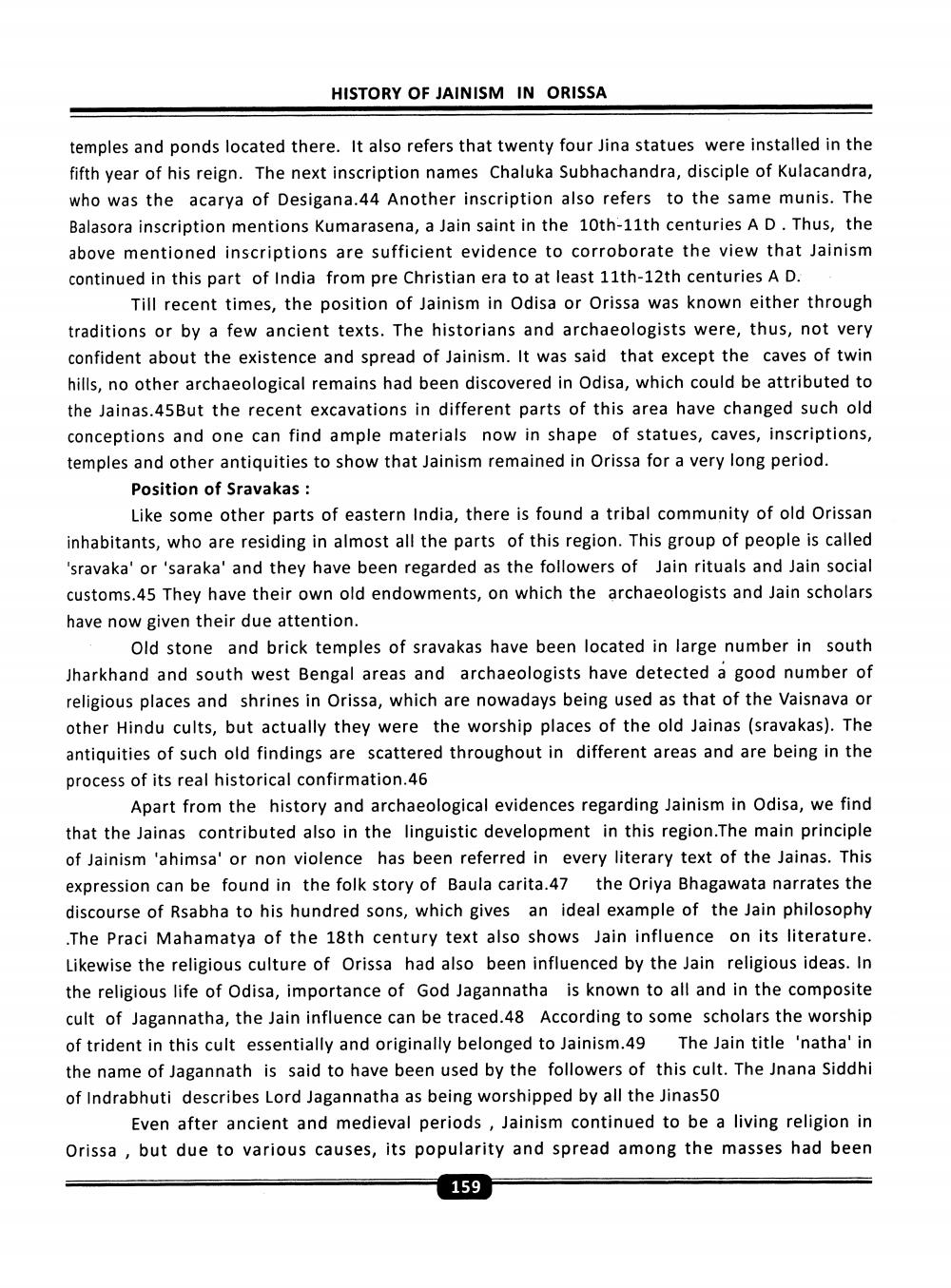________________
HISTORY OF JAINISM IN ORISSA
temples and ponds located there. It also refers that twenty four Jina statues were installed in the fifth year of his reign. The next inscription names Chaluka Subhachandra, disciple of Kulacandra, who was the acarya of Desigana.44 Another inscription also refers to the same munis. The Balasora inscription mentions Kumarasena, a Jain saint in the 10th-11th centuries A D. Thus, the above mentioned inscriptions are sufficient evidence to corroborate the view that Jainism continued in this part of India from pre Christian era to at least 11th-12th centuries A D.
Till recent times, the position of Jainism in Odisa or Orissa was known either through traditions or by a few ancient texts. The historians and archaeologists were, thus, not very confident about the existence and spread of Jainism. It was said that except the caves of twin hills, no other archaeological remains had been discovered in Odisa, which could be attributed to the Jainas.45But the recent excavations in different parts of this area have changed such old conceptions and one can find ample materials now in shape of statues, caves, inscriptions, temples and other antiquities to show that Jainism remained in Orissa for a very long period.
Position of Sravakas :
Like some other parts of eastern India, there is found a tribal community of old Orissan inhabitants, who are residing in almost all the parts of this region. This group of people is called 'sravaka' or 'saraka' and they have been regarded as the followers of Jain rituals and Jain social customs.45 They have their own old endowments, on which the archaeologists and Jain scholars have now given their due attention.
Old stone and brick temples of sravakas have been located in large number in south Jharkhand and south west Bengal areas and archaeologists have detected a good number of religious places and shrines in Orissa, which are nowadays being used as that of the Vaisnava or other Hindu cults, but actually they were the worship places of the old Jainas (sravakas). The antiquities of such old findings are scattered throughout in different areas and are being in the process of its real historical confirmation.46
Apart from the history and archaeological evidences regarding Jainism in Odisa, we find that the Jainas contributed also in the linguistic development in this region. The main principle of Jainism 'ahimsa' or non violence has been referred in every literary text of the Jainas. This expression can be found in the folk story of Baula carita.47 the Oriya Bhagawata narrates the discourse of Rsabha to his hundred sons, which gives an ideal example of the Jain philosophy .The Praci Mahamatya of the 18th century text also shows Jain influence on its literature. Likewise the religious culture of Orissa had also been influenced by the Jain religious ideas. In the religious life of Odisa, importance of God Jagannatha is known to all and in the composite cult of Jagannatha, the Jain influence can be traced.48 According to some scholars the worship of trident in this cult essentially and originally belonged to Jainism.49 The Jain title 'natha' in the name of Jagannath is said to have been used by the followers of this cult. The Jnana Siddhi of Indrabhuti describes Lord Jagannatha as being worshipped by all the Jinas 50
Even after ancient and medieval periods , Jainism continued to be a living religion in Orissa , but due to various causes, its popularity and spread among the masses had been
159




